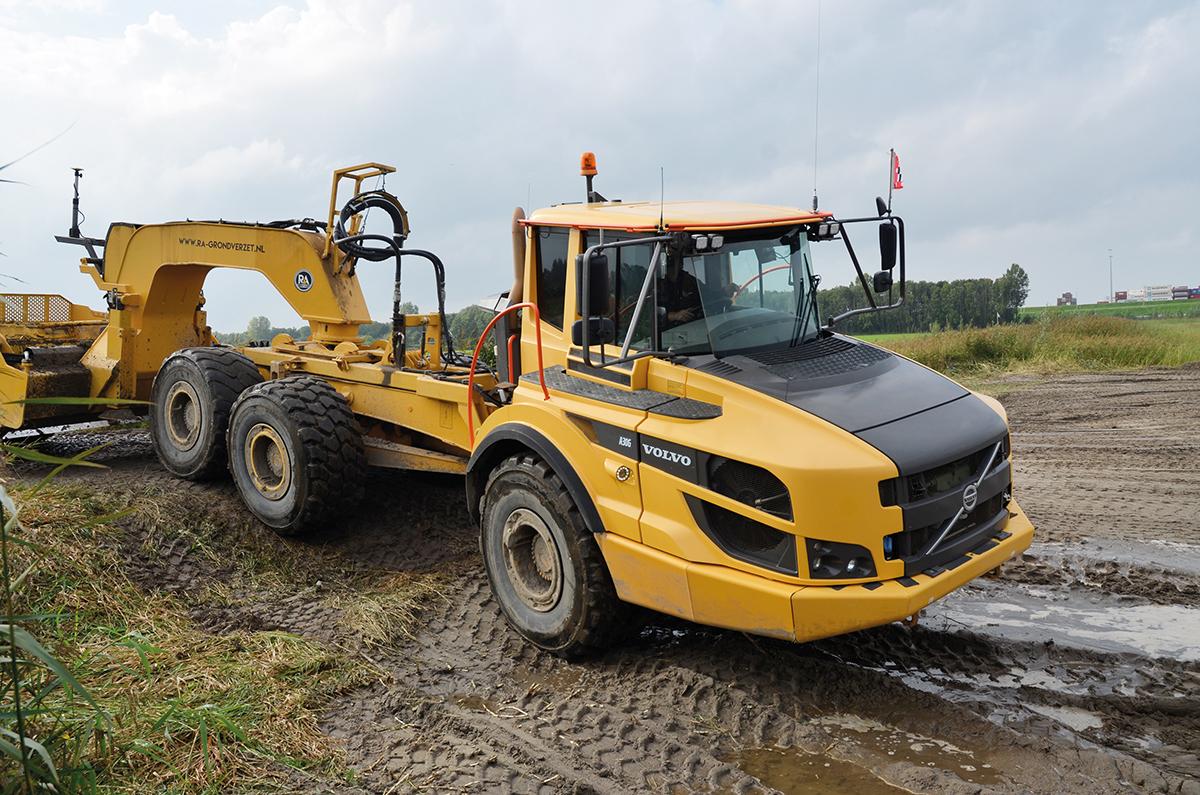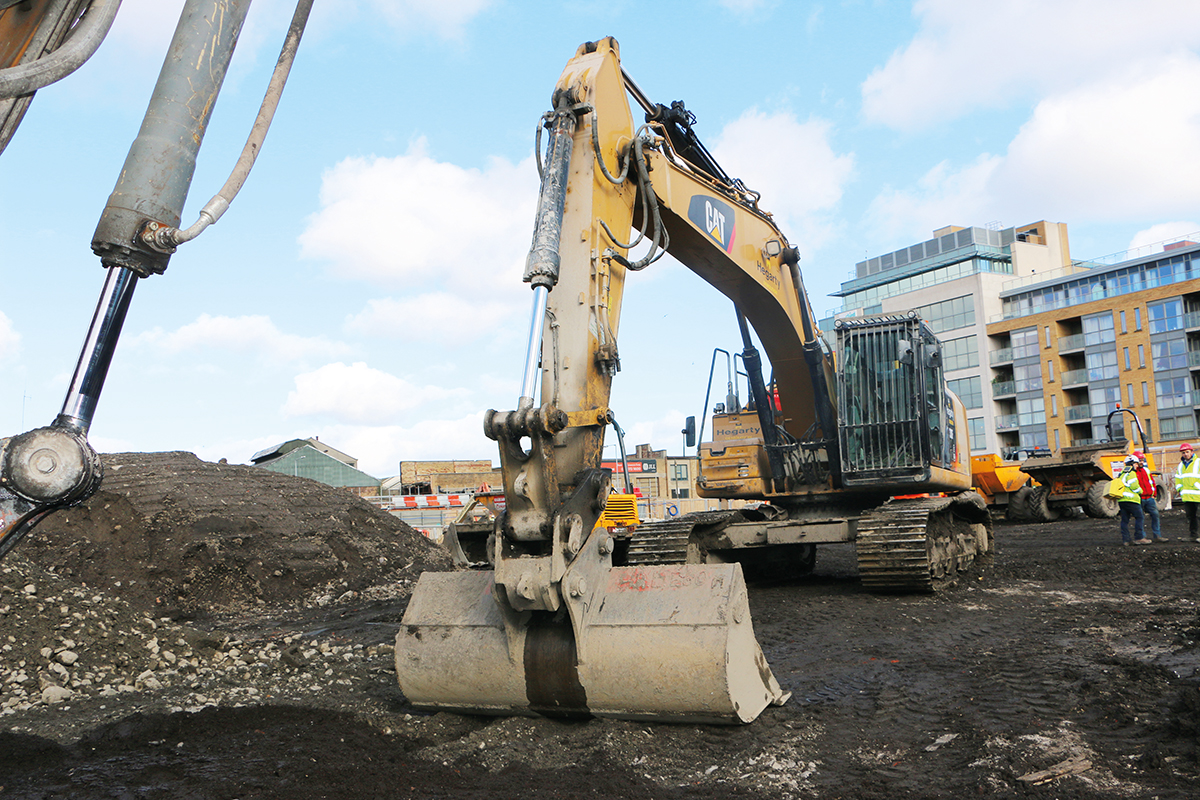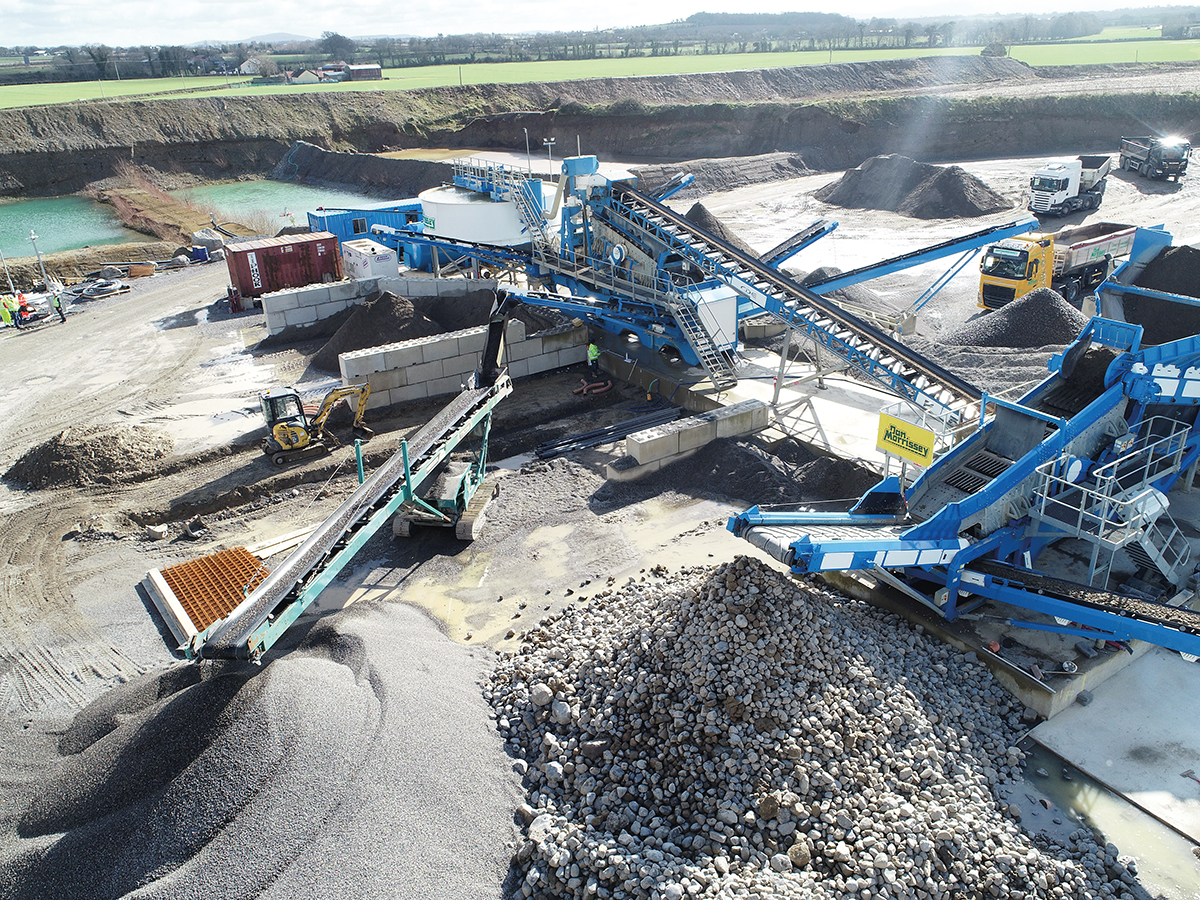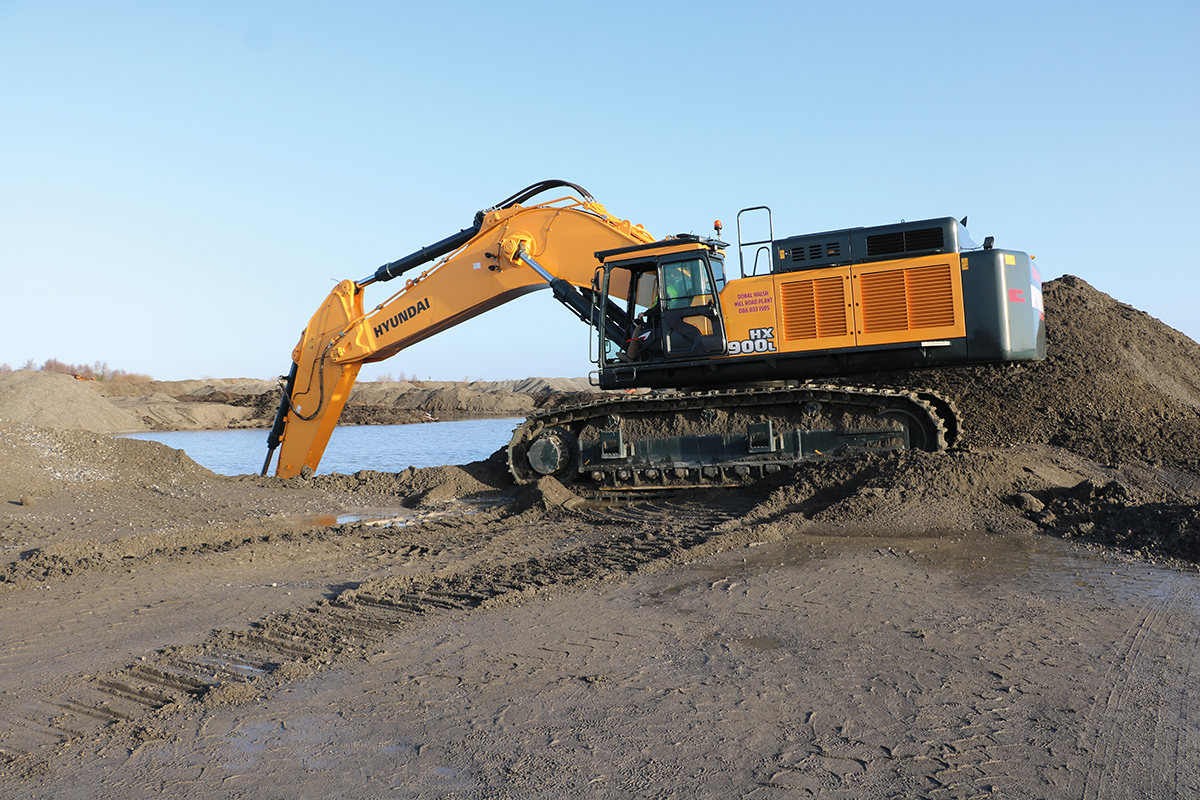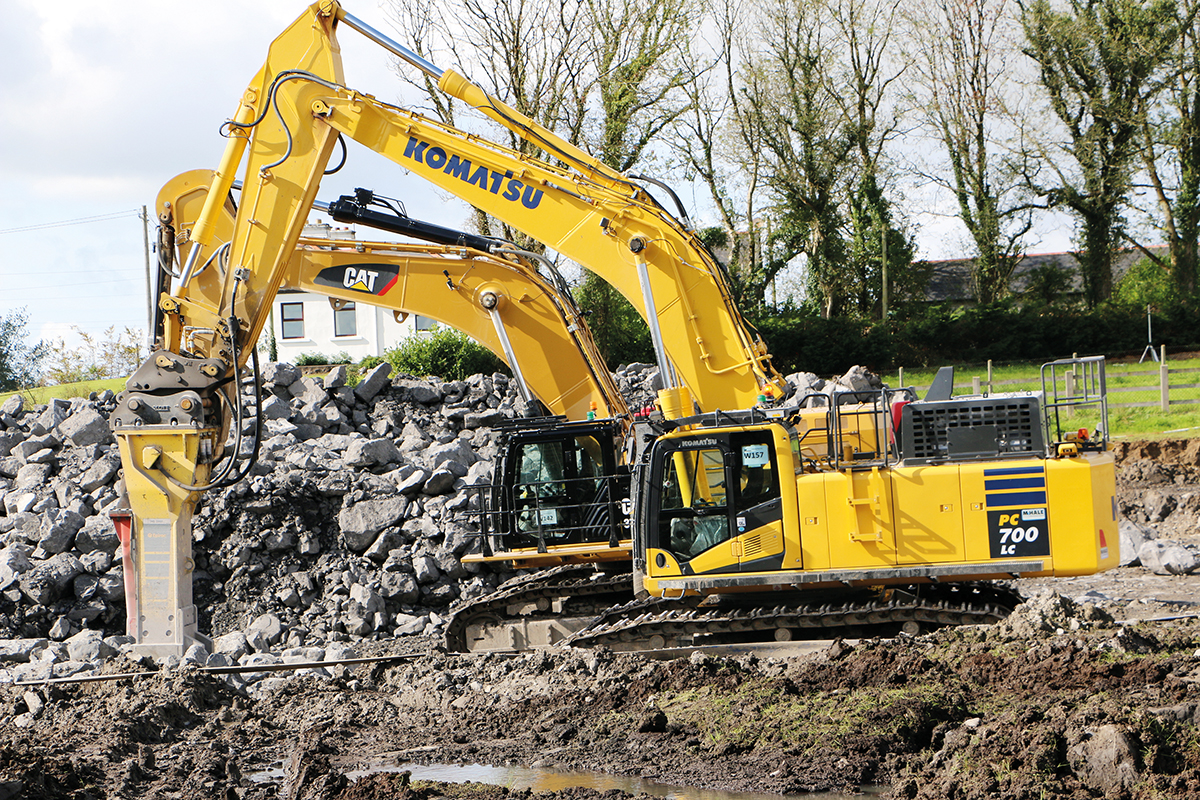Dutch earthworks company RA Grondverzet is the proud owner of a twin-scraper combination dubbed the C02 Killer, writes our heavy iron correspondent Steven Vale.
The striking combination belongs to Benny Ridderman and Nigel Argeloo, the ‘R’ and the ‘A’ behind RA Grondverzet (earthworks). Before discussing the details, a bit of the background. The two men each own separate businesses, Nigel a road surfacing company with 12 fulltime staff and 20-odd mobile machines, while four Volvo A30Gs bought new in 2014, 2016, 2018 and 2020, form the basis of Benny’s earthworks firm. Friends for nearly two decades, while Nigel earns a living from surfacing roads, his second big passion is earthmoving. Before starting his own business, he piloted a wide range of tracked and wheeled excavators, dozers and wheeled loaders, for different companies.

In his spare time, he and Benny regularly tinker with their machines, but 2019 was the first time they officially worked together when they formed RA Grondverzet. The two men have long discussed a more efficient way to shift muck than an ADT. The dream machine they had in mind not only needed to increase capacity, but work unassisted without needing to be loaded by an excavator and the spoils levelled by a dozer.
These discussions intensified a couple of years ago when Nigel watched a video on the Canadian-made K-Tec twin-scrapers. After visiting the K-Tec stand at BAUMA 2019, they were soon on a flight to England to see a couple of this firm’s 21.0m³ capacity scrapers in action and have a play with the controls. While pleased with what they saw, there were a few things they were keen to change and the 4.2m width was certainly an issue for transport. Back home, the two men approached Dutch scraper manufacturer AP Machinebouw to discuss their dream combination. The request was to tow a pair of AP15s (15m³) behind an ADT, which they reckon is much stronger than an articulated tractor. While convinced that an ADT had plenty of power to pull a pair of scrapers, they were told this was not possible and the recommendation was to buy a wheeled or rubber-tracked articulated tractor.
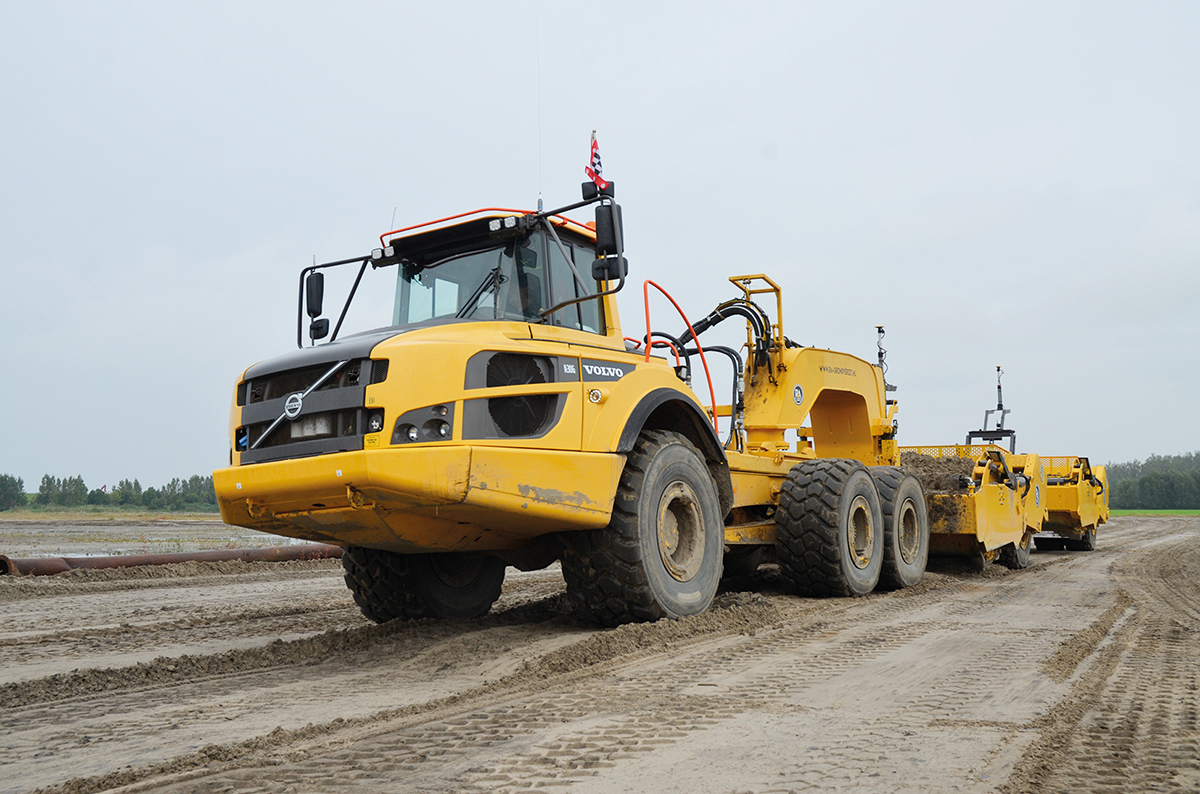
The idea becomes real
The two men had no plans to buy a tractor. Neither did they want to pull them with a dozer, a practice adopted by a couple of Dutch earthworks contractors. Later last year, the two friends were invited to a working K-Tec demonstration in a sand pit in Denmark. They took the AP boss with them and the three men saw that a Volvo A30G had no trouble at all towing a single 21.0m³ scraper. The burning question was would it pull two of them? They did not have to wait long to find out because a few weeks later AP celebrated its 40th anniversary. One of the company’s special creations on display to commemorate the occasion was the firm’s first twin-scraper combination.
Based on two AP15s (15.0m³) made for a Dutch customer’s New Holland T9 articulated tractor in late 2018, Benny and Nigel liked what they saw. Pleased with the narrower 3.5m width, they bought them at the anniversary event, which was the starting point for the two men to officially join forces as RA Grondverzet. Selecting a power source to pull the twin scrapers was easy. After 8,000 hours of service, Benny sacrificed his 2014-made Volvo A30G, which he bought as an ex-demonstrator from Germany in 2015 with just 15 hours on its clock. The drawings and modification plans for the new swan-neck drawbar to connect the first scraper to the A30G took two months at the back end of last year, and the modification work began in earnest in January this year.
One of the last jobs was to sand blast the paint work back to the bare metal (the scrapers were painted blue in the former owner’s colours) and paint them Volvo yellow. Finished a little later than planned, we caught up with the lengthy combination four weeks and roughly 250 hours into its first job, a couple of miles from RA Grondverzet’s base at Swifterbant.
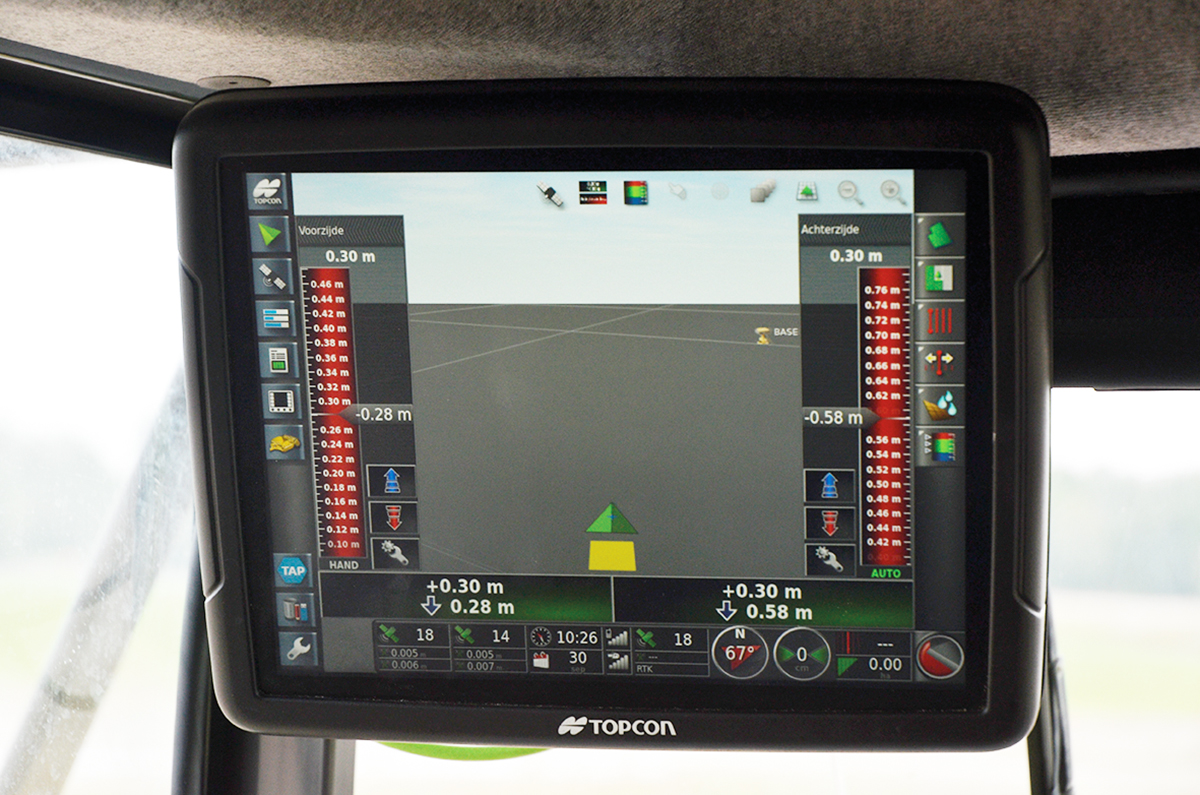
Striking is the best word to describe it. Stretching to just over 26.0m from head to toe, it depends on the material, but fully loaded the GVW often exceeds 100 tonnes. The second thing that caught my attention was the surprisingly tight turning circle. The test location is to shift 21,000m³ of soil and 10,000m³ of sand to level the land in preparation for a new harbour project on the edge of the Ijsselmeer lake near the Dutch town of Lelystad. There is no change to the front half of the five-year-old A30G, which continues to take its power from a 355hp six-pot and turbocharged 10.8-litre Volvo D11 Stage IV engine. The six-speed automatic transmission is also standard and the 6×6 stands on 750/65R25 tyres.
The obvious visible difference from the outside is the lack of a skip and tipping cylinder, which they still have back at the yard but will probably never ever use again. The hydraulic oil supply and return hoses for the tipping ram are still in place, but are now split to power the scrapers, each of which are fitted with dedicated valve blocks. The engineering challenge of the project was the connection point, or fifth wheel coupler, of the first scraper to the A30G. The AP15’s standard drawbar was removed and replaced for the newly-engineered swan-neck design, which sees the scraper’s 12.0-tonne standard weight increase to 15.0 tonnes.
Developed with input from the customer and AP, a lot of thought went into the attachment system to the chassis of the Volvo dumper. Four forward facing ‘hooks’ welded to the chassis of the A30G secure the base of the swan neck drawbar. Disconnecting it is child’s play. All operator Benny needs to do is pull out a locking pin each side of the horizontal bar that secures the attachment frame. With this bar slid to the side, a top link is then shortened. This action lowers the front part of the attachment frame into which the front two hooks are positioned.
The operator then inches backwards until the frame has left all four hooks and two hydraulic jacks (all done from the cab) at the front of the scraper are lowered to the ground to raise the front of the swan neck drawbar clear of the chassis. The last job is to disconnect the hydraulic hoses. The hydraulic jacks are also worth a mention. The ability to alter the height of each one independently means that the leading scraper does not need to be dropped off on perfectly level concrete.

In the cab
It was time to join Benny for a stint in the cab and take a peek at the newly-developed control panel. Easy to operate, and neatly located to replace the skip tipping handle, changing between scrapers is done by the flick of a switch. Control of the scraper bowl which tips forward to empty the contents, and the door, is from two paddle toggles, and the same controls are used to raise/lower the parking stands on the leading scraper and operate the GPS masts. The full power of the hydraulic flow rate of the A30G is too high for the scrapers, so a turn dial on the control panel allows the operator to reduce or increase the speed, and the plan this winter is to link the load sensing systems. Benny follows the filling and emptying the scraper bowls from a CCTV located on the right A-pillar. This switches automatically between the two scrapers. A third camera linked to the monitor provides useful images when reversing to connect the second scraper. Providing the operator with detailed information from each scraper, at the time of my visit the Topcon GPS screen in the top left corner of the cab’s left A-pillar was set to the automatic mode and scraping layers of 5.0cm at a time. The system can be programmed with up to six different work heights. So, what is it like to operate? “There is a lot more to do than when driving a standard A30G,” says Benny. “There are more things to watch and change, but I enjoy it and it makes a nice change.”
And this brings us to the benefits of the machine when compared to a standard ADT. “We call it the C02 Killer,” says Nigel. “Reducing C02 output is a big thing in the Netherlands. We have a solution that does just this.” The twin-scraper configuration not only replaces an excavator, two ADTs and a dozer or wheeled loader to level material tipped out from the skips, but also a grader to patrol truck haul roads. “Also, the 14 wheels on the fully-loaded 100-tonne combination really firm the land, eliminating the need for a compactor,” adds Nigel. He plans to calculate precise C02 figures, but even without them, the scraper combination reduces the number of men and machines. It also reduces the fuel bill and Benny reckons the Volvo averages a maximum of 55lit/hr where the round trip distance of 1.0km. At this distance, outputs average 250 cubes an hour and an eight-hour total of 2,000m³. The only issue is the 380-litre fuel tank.
There are occasions when the second scraper has been dropped off at the current project. In this case, a full tank lasts all day. However, when the second scraper is added the tank needs refilling after 6-7 hours. “We are thinking about adding a second tank to the chassis,” says Benny. “There is plenty of space for one.” For obvious reasons, the two men want to use the Volvo hauler to tow two scrapers where possible, but it does work equally well with one as I was to find out. Later that day, material needed shifting to a bund at one end of the site where they was simply no room to turn with two scrapers. Still in its standard 12.5-tonne guise, the second scraper is easily detached. With the two drawbar locking pins removed, and the securing bar folded forward, Benny climbed back into the cab to raise the wheels of the second scraper and lower the edges of the cutting blade onto blocks. With the drawbar free, all he had to do then was loosen the hydraulic oil supply and return hoses, and electric, GPS and operation cables. He was on the move again just five minutes later.

Pleased with the performance
The two men really do appear to have thought of everything and we particularly like the way the masts supporting the GPS receivers are lowered hydraulically at the end of the day to allow the operator to safely remove the hardware from the second scraper from ground level. It is too early to talk about whether the two men’s gamble to invest in a twin-scraper combination was a wise decision, but as Nigel points out, many of his clients are also involved with earthwork projects, like the test location they are currently working at.
“The twin-scraper combination is an ideal solution for long distance hauling, reducing muck shifting costs by 20-30%,” he claims. With more potential scraper work on the horizon at Schiphol airport in Amsterdam, and another possible job in Lelystad, the two men are in upbeat mood and contemplating adding a second combination, possibly as early as next year. Next time they will go for a new Stage V Volvo ADT to reduce emissions still further. “Otherwise there is not a lot we will change. We are really pleased with the performance,” concludes Nigel. The plan with the current A30G is to run it until 12,000 hours, although Benny has no plans to sell it. “It was my first ADT and when it reaches the threshold I will find another use for it.” He is toying with the idea of fitting it with a water tank for dust suppression work at construction projects, and when it does eventually reach the end of its working life then it is quite likely it will be parked at the entrance to the yard as a museum piece.


